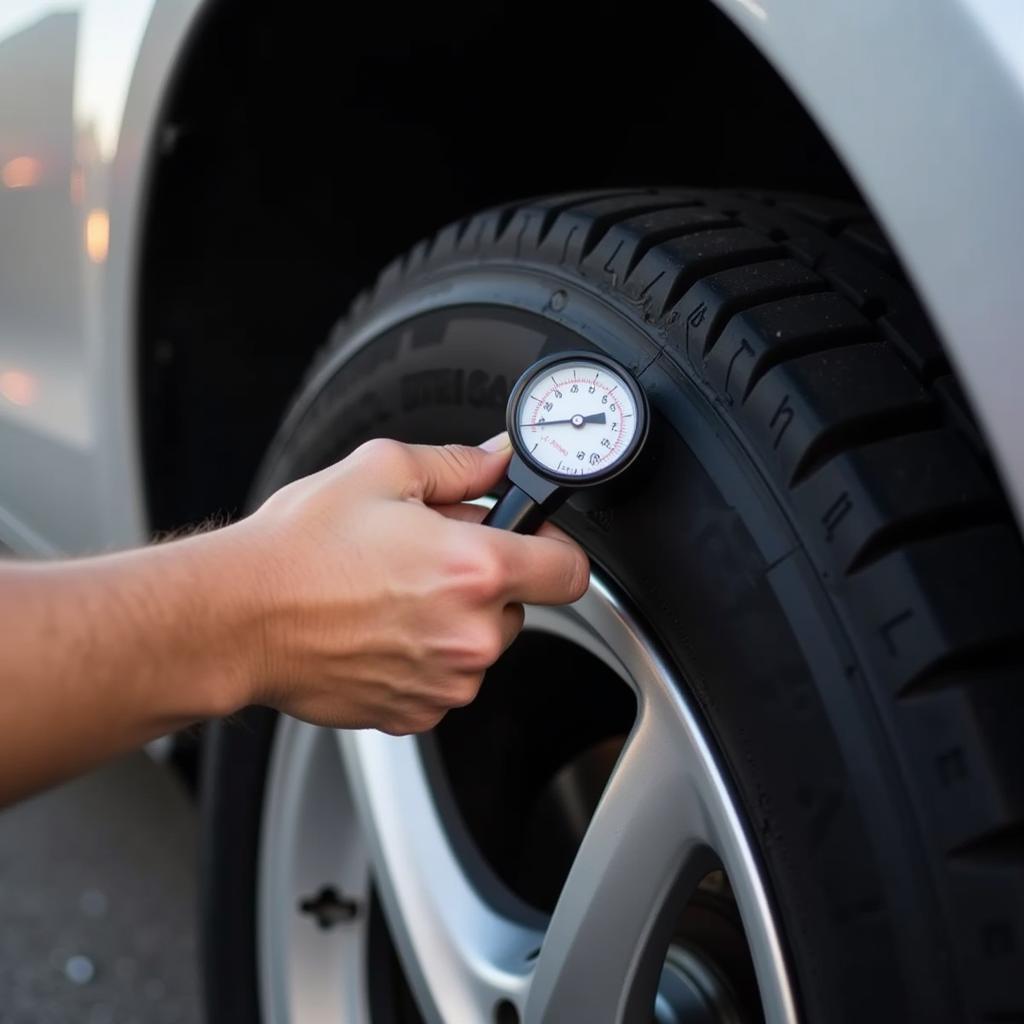Deep chips in your car’s metal are more than just an eyesore; they’re an open invitation to rust and further damage. Ignoring them can lead to costly repairs down the road. This guide will provide car owners, repair shops, and technicians with practical solutions to Fix Metal Deep Chips On Cars effectively.
Understanding the Severity of Deep Chips
Deep chips, penetrating through the paint and primer to expose bare metal, require immediate attention. Unlike minor scratches, they can quickly escalate into rust, especially in humid or wet climates. Knowing how to address these chips is essential to preserving your vehicle’s appearance and structural integrity. You can find more helpful tips in our guide on car body fixing.
Why Fix Deep Metal Chips?
Addressing deep chips isn’t just about aesthetics. Rust can weaken the metal, compromising the structural integrity of your car. Prevention is key, and addressing these chips early can save you from extensive bodywork later on. What’s the easiest way to prevent rust from deep chips? Fix them immediately!
Materials and Tools Needed for Fixing Deep Chips
Before you start, gather the necessary tools. This includes sandpaper (varying grits), primer, automotive touch-up paint, clear coat, body filler, a putty knife, masking tape, rubbing compound, and a polishing cloth. Having everything prepared beforehand will make the process smoother and more efficient.
 Essential Tools for Repairing Metal Chips on a Car
Essential Tools for Repairing Metal Chips on a Car
How Deep is Too Deep?
If you can see bare metal, the chip is deep enough to warrant attention. Don’t wait for rust to form; act proactively. Looking for tips on addressing minor paint chips? Check out our guide on the best way to fix paint chips on black car.
Step-by-Step Guide to Fix Metal Deep Chips
-
Clean the Area: Thoroughly clean the chipped area with soap and water, ensuring it’s free of dirt and debris.
-
Sand the Chip: Using sandpaper, carefully sand the chipped area to remove any loose paint and rust. Start with a coarser grit and gradually move to a finer grit for a smooth finish.
-
Apply Body Filler (if necessary): For deep chips, apply a thin layer of body filler to level the surface. Let it dry and sand it smooth. How long should body filler dry? Follow the manufacturer’s instructions for drying times.
-
Prime the Area: Apply a thin coat of automotive primer to the sanded area. This provides a base for the paint and helps prevent rust.
-
Apply Touch-Up Paint: Carefully apply several thin coats of touch-up paint, allowing each coat to dry before applying the next. Concerned about the cost of rust repair? See our article on the average cost to fix rust on car.
-
Apply Clear Coat: Once the paint is dry, apply a few coats of clear coat to protect the paint and give it a glossy finish.
-
Sand and Polish: After the clear coat has dried, use a fine-grit sandpaper and rubbing compound to blend the repaired area with the surrounding paint. Finish with a polishing cloth for a professional look. Fixing paint chips on white cars can be tricky. Check out our guide on fix paint chips on white car for helpful advice.
Preventing Future Deep Chips
Protecting your car’s paint is an ongoing process. Regular washing and waxing, using paint protection film, and avoiding driving on gravel roads can help prevent future chips and scratches. Need help with road rash? We’ve got you covered with our guide on how to fix road rash on car paint.
Conclusion
Fixing metal deep chips on cars is a manageable task with the right tools and techniques. By following this guide, you can prevent rust, maintain your car’s value, and enjoy a pristine finish. Need further assistance? Contact AutoTipPro at +1 (641) 206-8880 or visit our office at 500 N St Mary’s St, San Antonio, TX 78205, United States. We are here to help you keep your car looking its best.






Leave a Reply